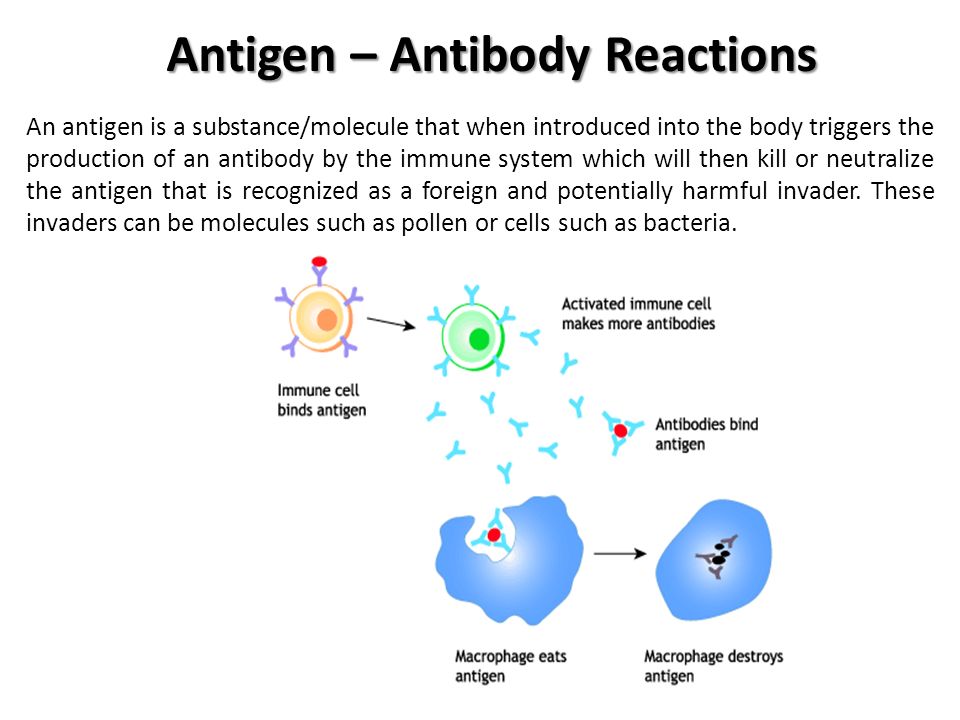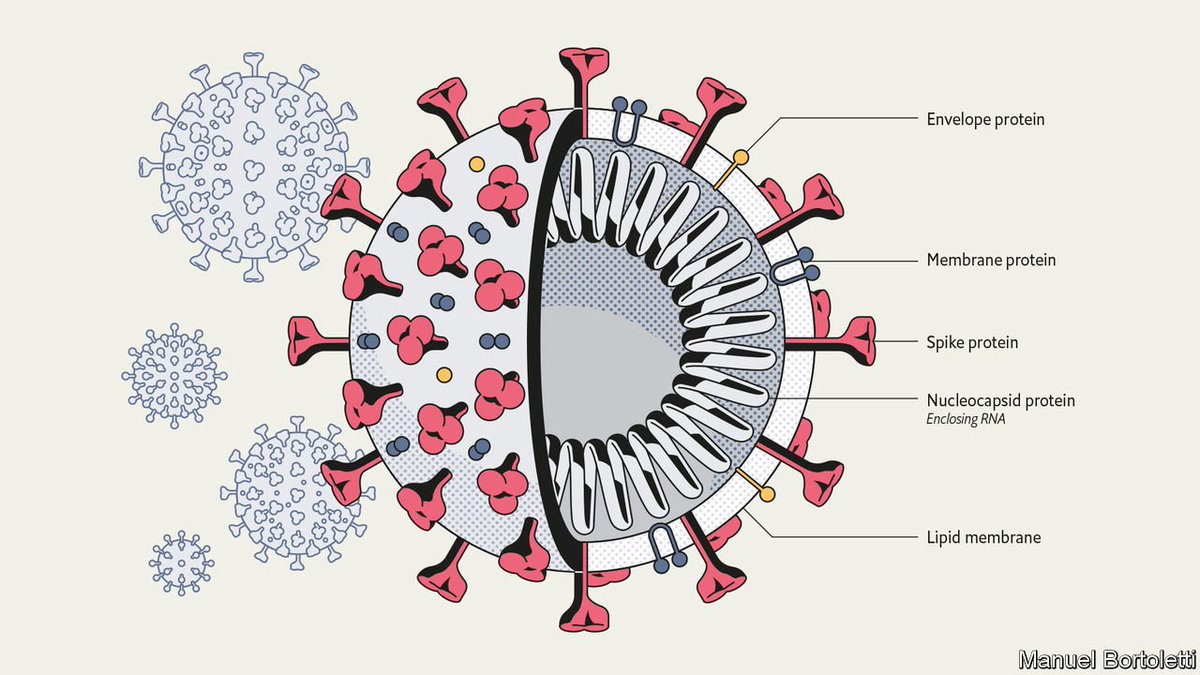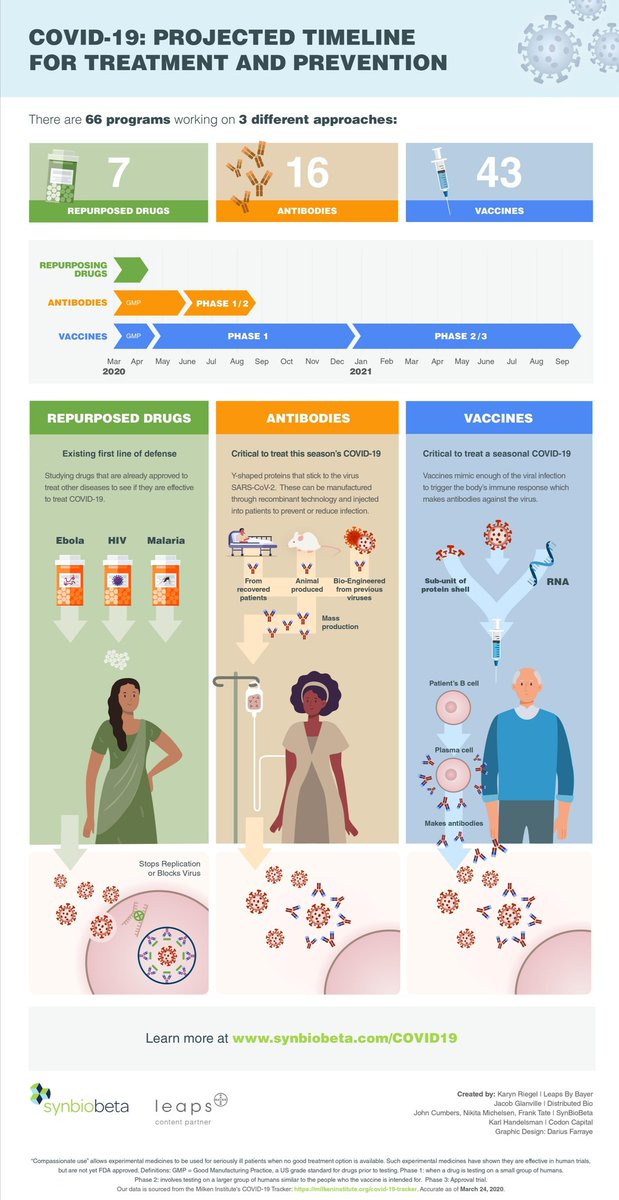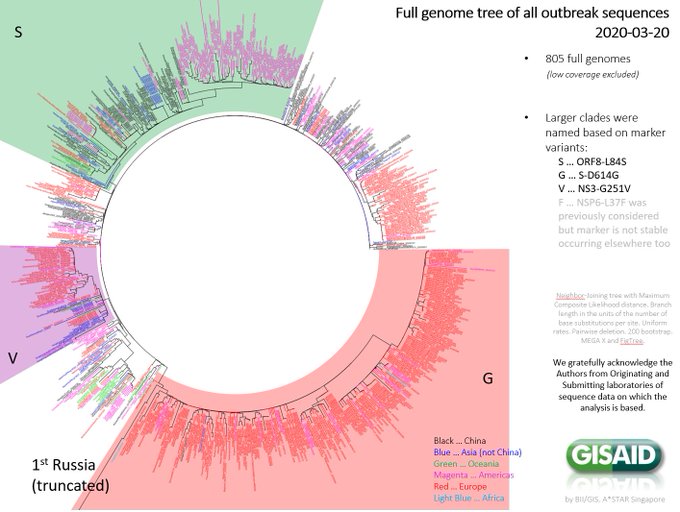THREAD --> In this time of #COVID19, I figured it might be handy to share some basics with other reporters who might be new to the health beat. What& #39;s an & #39;antibody& #39;? What is & #39;viral load& #39;? Here& #39;s a list of some things reporters might want to know. I& #39;m adding to it slowly.
First off. A lot of the tests being discussed are looking for & #39;antibodies& #39;. What the heck are those? In a nutshell, proteins made by certain immune cells that bind to particles in the body (usually foreign) that we call & #39;antigens& #39;. Here& #39;s a 3:28min primer: https://www.youtube.com/watch?v=Cvu1ApHkhYM">https://www.youtube.com/watch...
What& #39;s that? You& #39;re a reporter too busy to watch a 3:28min video? I understand. Here& #39;s a picture capturing pretty much the same thing 3/n (source: https://slideplayer.com/slide/9390892/ )">https://slideplayer.com/slide/939...
So, about that whole thing regarding whether viruses can & #39;live& #39; on surfaces? Turns out that viruses aren& #39;t really & #39;alive& #39; unless they can access cells to replicate. They& #39;re just a string of RNA or DNA letters. They need a cell& #39;s machinery to replicate. 4/n https://www.scientificamerican.com/article/are-viruses-alive-2004/">https://www.scientificamerican.com/article/a...
Long story short: viruses need to get into cells, and hijack the protein-making factories inside cells. When scientists detect traces of viral DNA or RNA on surfaces, they have to grow it inside cells to see if it& #39;s still really infectious. 5/n
Next: & #39;viral load& #39;. I suspect we& #39;ll be hearing about this more. I& #39;ll go with Google& #39;s definition of this one: Viral load is "a measurement of the amount of a virus in an organism, typically in the bloodstream, usually stated in virus particles per milliliter." 6/n
Here& #39;s a good little video on how vaccines work. It& #39;s basic *and it does not cover all vaccine platforms*, but it& #39;s a good starting point. 2:27min, but skip to 1:45min if you are on deadline: https://www.youtube.com/watch?v=-muIoWofsCE">https://www.youtube.com/watch...
Also, not all vaccines work the same way! There are different & #39;platforms& #39; of vaccines (Live-attenuated, inactivated, subunit, etc). Thankfully, the U.S. government has this handy FAQ sheet on different vaccine technologies. 8/n https://www.vaccines.gov/basics/types ">https://www.vaccines.gov/basics/ty...
I LOVE pictures! I don& #39;t think reporters look at images of viruses enough. Here& #39;s a handy one of #SARSCoV2 from @TheEconomist. 9/n https://www.economist.com/briefing/2020/03/12/understanding-sars-cov-2-and-the-drugs-that-might-lessen-its-power">https://www.economist.com/briefing/...
While we& #39;re talking about words and what they mean. Here is an explainer I did on what the word "airborne" means. TL;DR, it& #39;s complicated. 10/n https://www.wired.com/story/they-say-coronavirus-isnt-airborne-but-its-definitely-borne-by-air/">https://www.wired.com/story/the...
Now for... clinical trials!! If you are wondering what a & #39;phase 1& #39; trial is vs a & #39;phase 3& #39; trial, here& #39;s a handy guide from the American Cancer Society. It& #39;s for cancer trials, not for infectious diseases, but you can get the idea. 11/n https://www.cancer.org/treatment/treatments-and-side-effects/clinical-trials/what-you-need-to-know/phases-of-clinical-trials.html">https://www.cancer.org/treatment...
If you are too on deadline to read that last link, here& #39;s a quick-and-dirty distillation:
1. phase 1 = few people, assessing *safety*
2. phase 2 = more people, glimpse at response + side effects
3. phase 3 = often multiple trial sites, large scale, looking for efficacy, too
12/n
1. phase 1 = few people, assessing *safety*
2. phase 2 = more people, glimpse at response + side effects
3. phase 3 = often multiple trial sites, large scale, looking for efficacy, too
12/n
Drug approval! It& #39;s not as simple as some --errrr politicians -- make it seem. Here& #39;s a neat little chart your tax dollars paid for. Enjoy it! It& #39;s useful! 13/n https://www.fda.gov/drugs/drug-information-consumers/fdas-drug-review-process-continued">https://www.fda.gov/drugs/dru...
Here& #39;s a cheat sheet on key drug approval terms:
Preclinical: tests in cells, animals
IND: investigational new drug (application) = what drugmakers submit when they want to start a clinical trial
NDA: new drug application = what they submit to get approval to market a drug
14/n
Preclinical: tests in cells, animals
IND: investigational new drug (application) = what drugmakers submit when they want to start a clinical trial
NDA: new drug application = what they submit to get approval to market a drug
14/n
Here& #39;s a cool illustration from industry, h/t @VijaySciWri - but take with a giant grain of salt. It& #39;s not a sure bet by any means that vaccines will be on this timeline. 15/n
Another neat picture to add to this thread! Via @Laurie_Garrett. It shows how 805 #SARCoV2 #coronaviruses sequences relate to each other. (Note that "clades" of viruses descend from common ancestors). 16/n
Today’s addition to this thread comes via @cstross. It’s the word “nosocomial”, which means a hospital-acquired infection.
See link: "The utter failure of sound clinical leadership will lead to an absolute explosion of nosocomial COVID-19 infection." 17/n https://www.thelancet.com/journals/lancet/article/PIIS0140-6736(20)30727-3/fulltext#.Xn3s9K9het8.twitter">https://www.thelancet.com/journals/...
See link: "The utter failure of sound clinical leadership will lead to an absolute explosion of nosocomial COVID-19 infection." 17/n https://www.thelancet.com/journals/lancet/article/PIIS0140-6736(20)30727-3/fulltext#.Xn3s9K9het8.twitter">https://www.thelancet.com/journals/...
Here& #39;s an addition to this tip-sheet thread - a great explainer from @carlzimmer and @13pt on what the #SARSCoV2 virus is built of. 18/n https://www.nytimes.com/interactive/2020/04/03/science/coronavirus-genome-bad-news-wrapped-in-protein.html">https://www.nytimes.com/interacti...

 Read on Twitter
Read on Twitter






